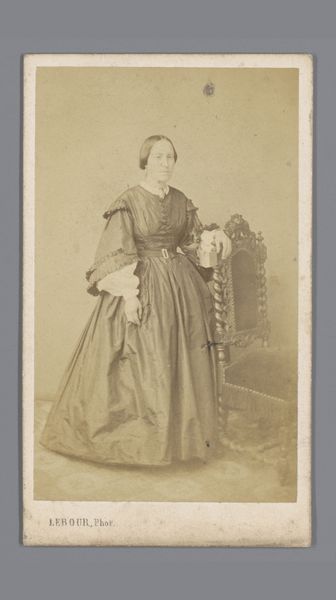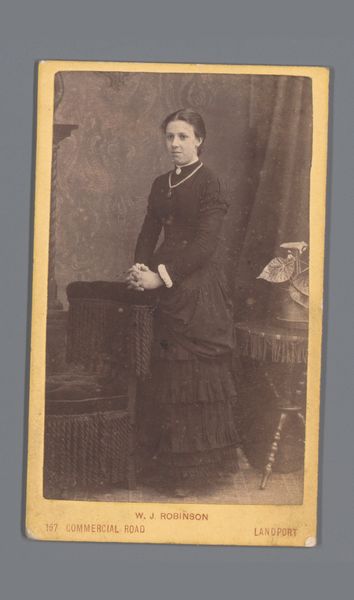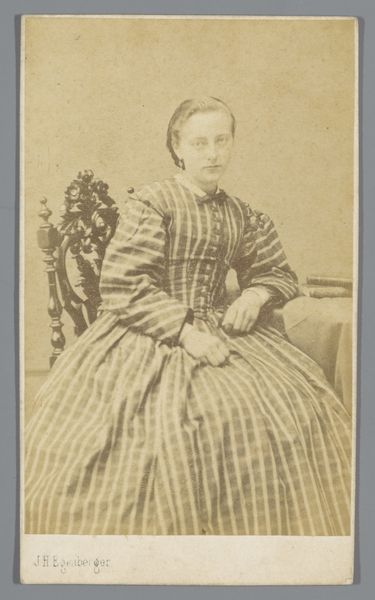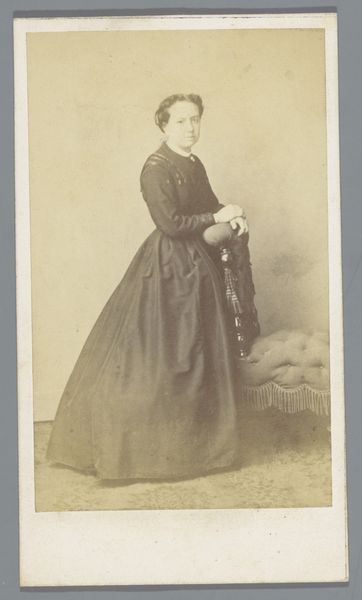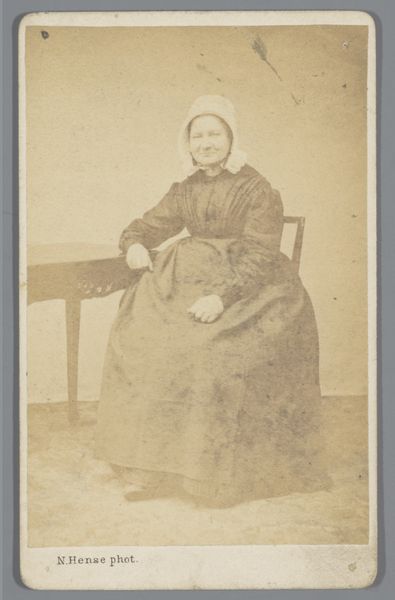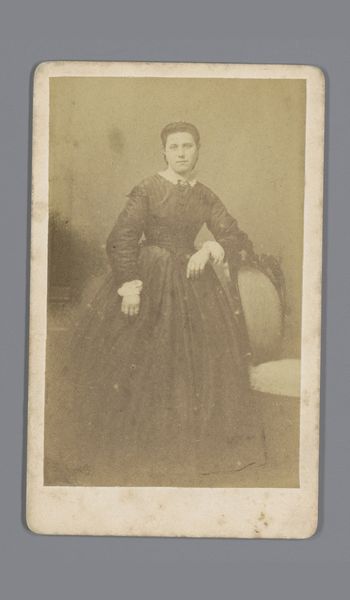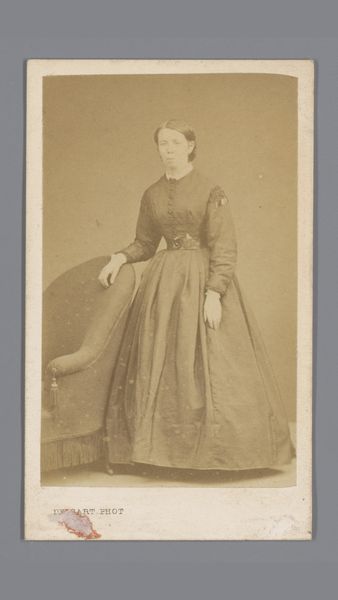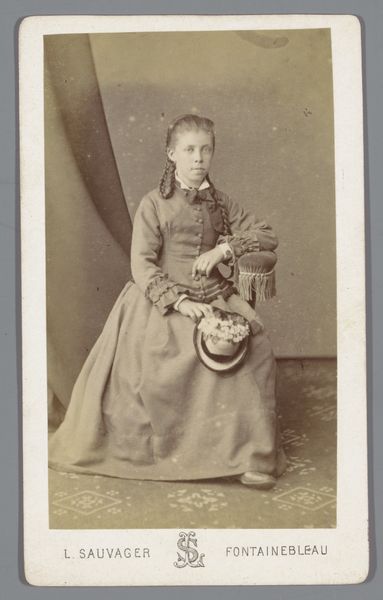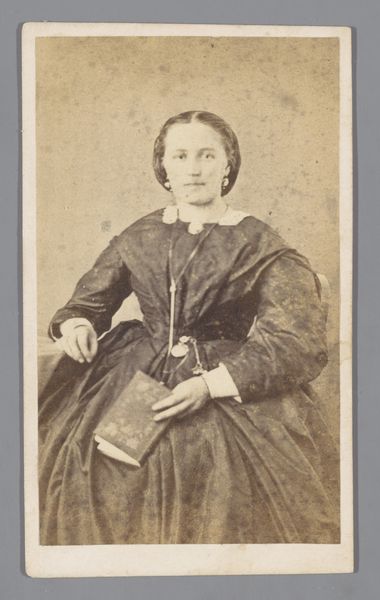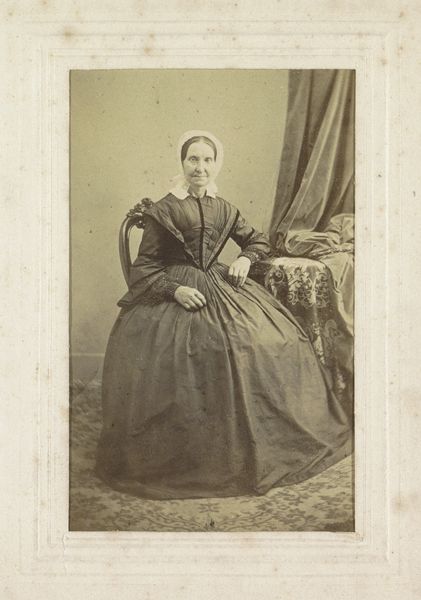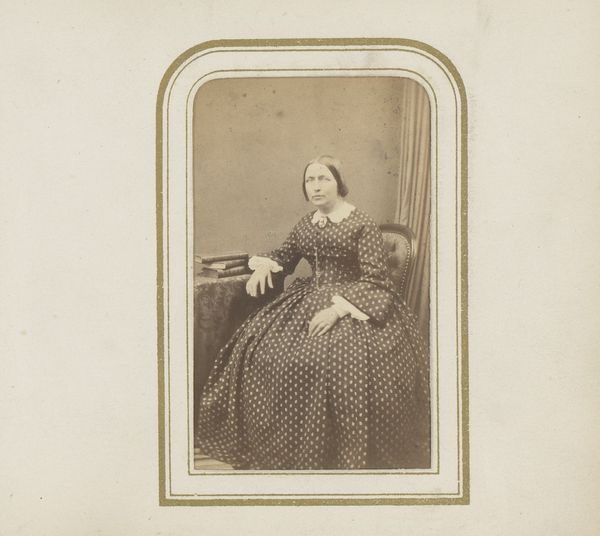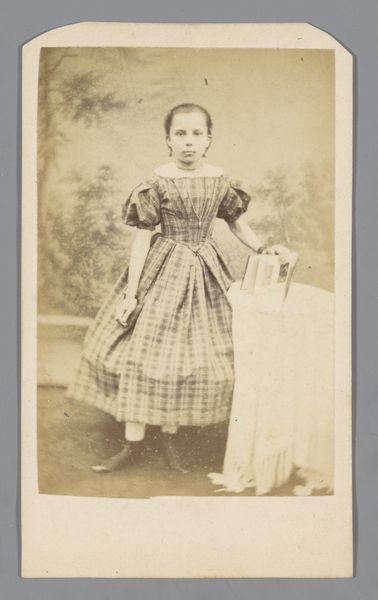
photography, gelatin-silver-print
#
portrait
#
mother
#
photography
#
gelatin-silver-print
#
realism
Dimensions: height 106 mm, width 64 mm
Copyright: Rijks Museum: Open Domain
Curator: Let’s take a look at this intriguing photograph. It’s titled "Portrait of an Unknown Woman with Child in her Lap" by Johann Heinrich Martin Bosse, created sometime between 1870 and 1883. The medium is gelatin silver print, a relatively early photographic process. Editor: It has a hauntingly sweet and intimate feeling. The light is soft, and they’re posed in a very direct, almost confrontational way. It draws you in, making you wonder about their story, especially as unknown subjects of history. Curator: Indeed. This image offers us insight into the social context of late 19th century photography, particularly in its function as a document of family and class identity. How was this staged for the middle class of the Netherlands? And for whom did they produce these images? Editor: Exactly. The act of portraying themselves becomes political. Their clothing is telling. The woman’s dark, patterned dress speaks to societal constraints. Yet the baby in white—almost floating—has this sense of untarnished innocence. It’s about the representation of motherhood itself, then and now. Who has the privilege to be portrayed as a "Madonna?" Curator: Furthermore, consider the limitations placed upon Bosse, a photographer, to conform to established ideas of portraiture which themselves, borrowed directly from the academic painting tradition. Did he break the tradition by leaving his subjects "unknown"? Or, how might we rewrite our ideas around identity today, through viewing previously unstudied or marginalized photographs? Editor: It does make you reflect on these often anonymous women. To me, their story highlights gender inequality in the 19th century through a 21st century lens. These power dynamics influenced whose stories were told, and by whom. Curator: These photographs provide crucial visual records that counter those narratives. By examining Bosse's work and photographs like these we better understand their visual importance, how they reflect lived experience, and shape ideas about family, memory and history in contemporary life. Editor: Absolutely. This piece, for me, has reinforced how powerful it is to reconsider even seemingly simple, "lost" narratives.
Comments
No comments
Be the first to comment and join the conversation on the ultimate creative platform.
